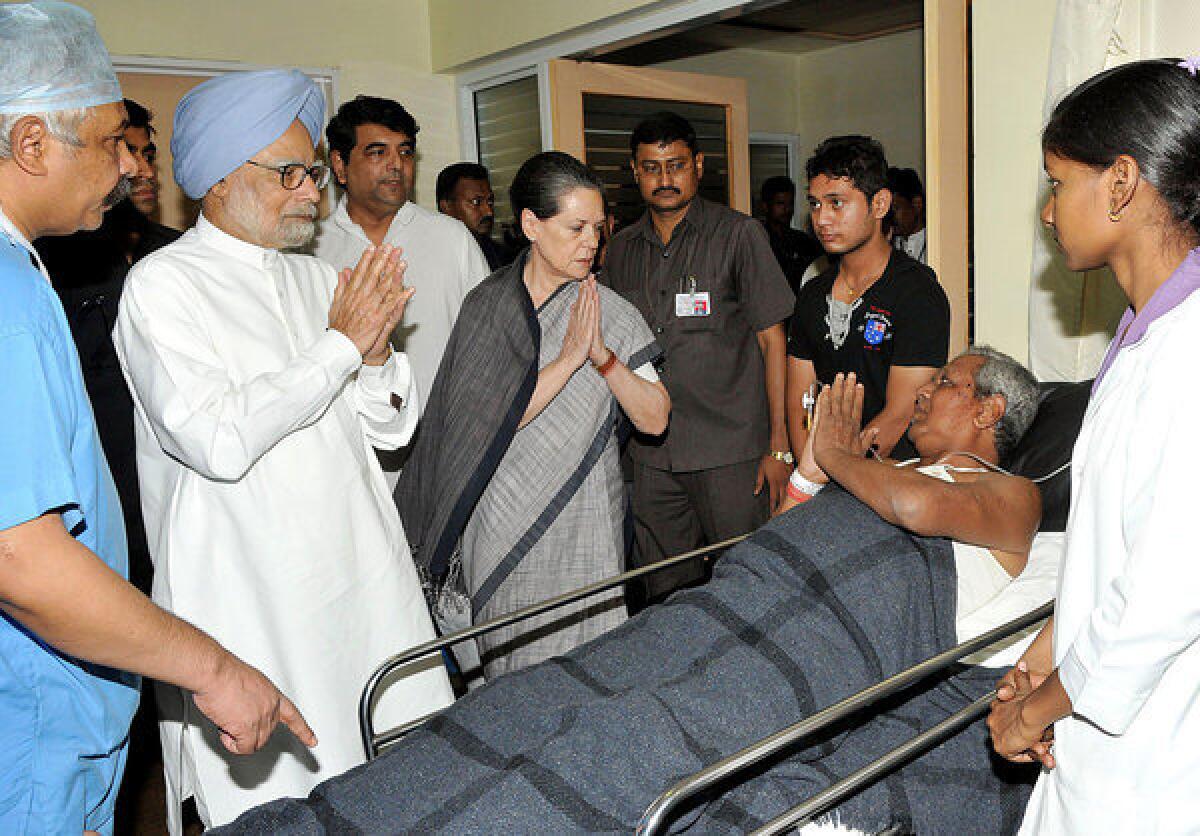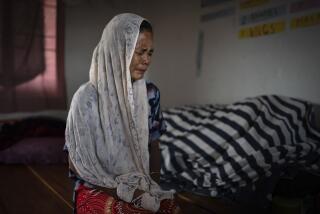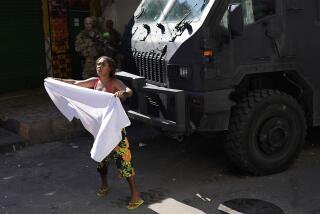Indian state on high alert following deadly Maoist attack

NEW DELHI – India’s central Chhattisgarh state remained on high alert Sunday as top leaders condemned an audacious, well-planned attack by Maoist insurgents that killed at least 24 people, the largest in recent years.
The assault took place around 4:30 p.m. Saturday, said Ram Niwas, the state’s director general of police, when a convoy of around 50 vehicles were returning from a political rally through the Darbha Ghati Valley, normally a relatively calm area adjoining Chhattisgarh’s volatile Sukma region.
Several of the vehicles had passed through when several that had fallen behind were hit by landmines, Niwas said, at which point their occupants came under protracted gunfire from an estimated 200 Maoist rebels waiting in ambush on a nearby hill.
“The Maoists were well-prepared,” he said. “Security forces retaliated but were outnumbered.”
The 16 civilians and eight soldiers whose bodies were recovered Sunday included senior officials with the ruling Congress Party. Among the highest profile was Mahendra Karma, a party leader in Chhattisgarh who spearheaded a controversial anti-Maoist campaign, having survived an assassination attempt last year.
Maoists pulled Karma out of his bullet-proof vehicle and executed him, Niwas said, as others collected the mobile phones of the political leaders to prevent them from calling for help.
“You survived last time but you will not survive this time,” the gunmen told Karma before killing him, an unidentified local Congress worker, his left arm bandaged, told the CNN IBN TV network.
Television footage showed paramilitary forces with drawn assault weapons patrolling the forest Sunday where the attack took place. Nearby were several white SUVs pockmarked with bullet holes, their windows smashed, their seats bloodied.
At least 32 people were injured, including an 84-year-old Congress leader in critical condition who was reportedly shot three times, in his abdomen, lungs and liver.
While attacks by radical left-wing Maoist guerrillas are not uncommon in India, the scope of this attack and the high-profile politicians involved drew quick condemnation.
Prime Minister Manmohan Singh, who has called Maoism the “single biggest internal security challenge ever faced by our country,” and Congress Party head Sonia Gandhi flew to the Chhattisgarh capital of Raipu on Sunday to show solidarity and visit victims in the hospital.
“I condemn this incident in the strongest of terms and would like to reiterate that violence has no place whatsoever in our democratic polity,” said President Pranab Mukherjee in a statement. “The nation will neither be overawed nor intimidated.”
Local media reported that the convoy may have ignored guidelines on traveling through Maoist-dominated regions. These include rules that the route should be “sanitized” by police an hour before a VIP group passes through and advisories against traveling in single, more vulnerable convoys.
Congress party officials were quick to blame the opposition Bharatiya Janata Party, which controls the state, for failing to provide adequate security.
Indian media also questioned why the $4 million-plus Israeli-made Heron long-range surveillance drones flown across the region didn’t pick up a Maoist ambush team reported to be hundreds strong.
Rahul Pandita, author of a book on Naxalism, as Indian Maoism is known, said the insurgents had two objectives: to get to Karma, who had eluded them repeatedly, and to show that their movement remains viable despite government claims to the contrary.
Though the government has made progress in its fight, the attack shows that the guerrillas are often better trained and motivated than paramilitary forces trying to fight an elusive enemy in malaria-infested jungles. “The Maoists wanted to send a clear message that they’re not on the back foot and can attack with impunity,” Pandita said.
Naxalism started in 1967 when a violent uprising took place in West Bengal state in the village of Naxalbari, after which the movement is named. The movement, which drew ideological inspiration from Chinese leader Mao Tse-tung, advocated overthrow of the state by Indian peasants and tribal groups.
Naxalism has since expanded from the northern Nepal border to parts of southern Kerala state. A 2007 estimate said Naxalites were active in half of India’s 28 states, accounting for 40% of its geographical territory. In recent years, violence has declined, leading to official statements that the movement had been largely marginalized.
Estimates in 2011 said Naxalites were active in nine states, although that’s still an alarming figure for the world’s largest democracy.
In 2012, 63 civilians, 46 security personnel and 38 Naxalites were killed, according to India’s home affairs ministry, down from 124, 80 and 34, respectively, in 2011.
Some critics argue, however, that the reduction reflects a less engaging, more defensive, posture by soldiers, police and paramilitary forces. “Large elements of India’s élite don’t have the stomach for a long and dirty war—which is what all insurgencies involve,” wrote Praveen Swami, senior associate editor of The Hindu newspaper, on Sunday. “For all the talk, the figures show, there’s no coherent strategy for force-building.”
India has spent tens of millions of dollars and thousands of lives fighting Naxalism, but some analysts say the government shares the blame for the movement’s spread given weak or non-existent public services, corruption and official arrogance in many affected areas.
ALSO:
Alleged revenge attack hospitalizes Pakistani inmate in India
Obama’s restrictions on drone program welcomed in Pakistan
Indian, Chinese leaders meet in New Delhi, pledge better relations
Tanvi Sharma in the New Delhi bureau contributed to this report.
More to Read
Sign up for Essential California
The most important California stories and recommendations in your inbox every morning.
You may occasionally receive promotional content from the Los Angeles Times.










